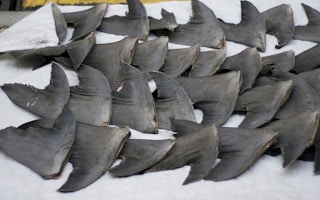Singapore has emerged as the world’s second largest trader of shark fins by value after Hong Kong, according to a new report by the wildlife trade monitoring group TRAFFIC.
Shark fins, used in traditional medicine and also considered a delicacy in Asia, are one of the most expensive seafood products. Fishermen typically cut off sharks’ fins while the animals are still alive and then throw them back to the ocean. Unable to swim without their fins, the sharks drown or are eaten by other predators. Scientists estimate that about 100 million sharks are killed every year, mostly for their fins.
TRAFFIC analysed Singapore’s shark trading data from 2005 to 2007, and also 2012 to 2014, and found that Singapore imported 14,114 metric tons and exported 12,402 metric tonnes of shark fins over these six years.
According to trade records in 2012-2013, Singapore’s shark fin exports were worth $40 million, closely following Hong Kong’s $45 million. More than 72 per cent of Singapore’s shark fin exports went to Hong Kong, mainland China and Japan during this time period.
The recorded value of Singapore’s import trade in 2012 to 2013 was $51.4 million, while Hong Kong’s was $170 million. Spain, Namibia and Uruguay were the top three sources of shark fins during this period, accounting for more than 66 per cent of Singapore’s imports.
“
Any country that dominates a particular trade has an extra responsibility to ensure it is transparent and traceable.
Kanitha Krishnasamy, senior programme manager, TRAFFIC Southeast Asia
By volume, Singapore was the world’s second biggest exporter and the third largest importer of shark fins, according to the report. Some of the species traded include the porbeagle (Lamna nasus), the oceanic whitetip shark (Carcharhinus longimanus), the basking shark (Cetorhinus maximus), the scalloped hammerhead (Sphyrna lewini), and the great hammerhead shark (Sphyrna mokarran). All five species are classified under various threatened categories on the IUCN Red List.
“The fact that Singapore is a significant trader means that the solution to the global shark crisis lies right here on our shores,” Elaine Tan, Chief Executive Officer of WWF-Singapore, said in a statement. “More robust monitoring of volumes and protected species will set a positive precedent for other countries and contribute to healthier shark populations and oceans.”
Unfortunately, Singapore’s trade information on sharks is incomprehensive and lacks transparency, the report says. This raises suspicions regarding the country’s trade from unsustainable and untraceable sources, the authors write, while also hampering in-depth analyses of the data.
“Any country that dominates a particular trade has an extra responsibility to ensure it is transparent and traceable,” said Kanitha Krishnasamy, Senior Programme Manager for TRAFFIC in Southeast Asia. “Key to any effort aimed at enabling legal and sustainable sourcing, and long-term viability of shark populations, is the open availability of product-specific trade data.”
This story was published with permission from Mongabay.com










